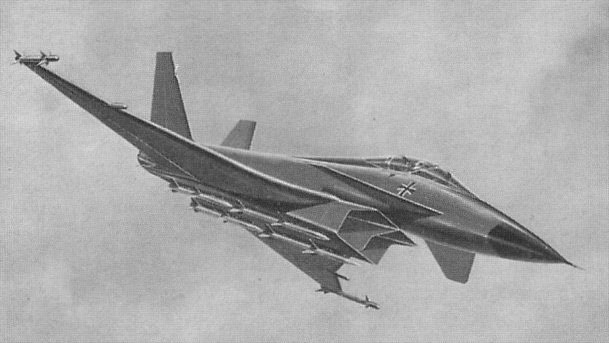No, they were not designed separately. They were designed by people who had all participated in collaborations before. The origin was the research into unstable configurations performed by MBB in Germany in the late 1970s by a modified F-104, the control configured vehicle F-104 CCV.

F-104 CCV (picture source)
As a result, MBB designed the Taktisches Kampfflugzeug 90 (or TKF-90), the first design of an unstable delta canard which promised unmatched maneuverability. Since Germany could not afford to develop the aircraft all by itself, collaborations were started with both Dassault and BAe, so that French and British engineers could learn of the advantages of this layout.

MBB TKF-90 concept (picture source)
First, BAe collaborated with MBB and joined the TKF-90 design, resulting in the European Collaborative Fighter proposal, only to continue on their own with two delta canard designs of their own, P.106 and P.110. P.106 had one engine and one vertical tail while P.110 had two of both, like the TKF-90. P.106 was rejected by the RAF, but went into a collaboration with Saab and eventually became the JAS-39.
To be fair, the first company to build and fly a closely-coupled delta canard was Saab with their Saab 37 Viggen. Saab has a long history of innovative work, beginning with ejection seats in 1942 and sweptback jets in 1948.

Saab 37 Viggen (picture source). In contrast to the TKF-90 it was an aerodynamically stable layout.
Meanwhile, MBB collaborated with Dassault in the Future European Fighter Aircraft (FEFA) program, so the French side learned of the advantages of a delta canard. Eventually, the French wanted less air-to-air capabilities and a smaller aircraft for better export chances, and the remaining FEFA partners continued in the European Fighter Aircraft (EFA) program which resulted in the EF-2000, while Dassault went it alone with the Rafale.
The EF-2000 is hampered to this day by this heritage. Its wing area was decreed by Maggie Thatcher and Helmut Kohl to be no more than 50 m² when a 60 m² wing would had resulted in a much more capable design. Next, the British engineers insisted on a straight leading edge, ignorant of the fact that only a cranked delta would provide good post-stall pitch characteristics. They also refused to accept a faceted design, and the German side could only rescue the "smiling intake" in order to reduce the radar cross section of the EF-2000 somewhat.

"Smiling intake" of the EF-2000 (picture source). The curved contour avoids corner reflections of electromagnetic waves.
And don't get me started on the odd location of the airbrake: On the center fuselage where it is least effective at high angle of attack and will blanket the single vertical tail. Designed by a committee with too many British engineers.




